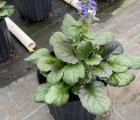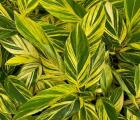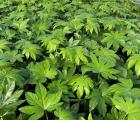Catlin's Giant Ajuga
Easily grown in average to medium well drained soil, in full sun or part shade. This low growing plant will grow into an attractive mat like ground cover. With its shiny bronze-green leaves and blue flowers this plant will add interest to any flower bed or garden area! Deer and rabbit resistant and low maintenance, this Ajuga will work well in any landscape. Crown rot can be a problem, particularly in the humid conditions of the deep South and in heavy soils. Avoid planting in wet, heavy soils, provide good air circulation and divide when clumps become overcrowded. Also avoid planting near perennial beds or lawns where its spreading nature could pose removal problems.




